Category: News
For Immediate Release
Wellington, FL – March 21, 2022 – Palm Beach Equine Clinic (PBEC) announced the addition of the innovative care program AcutePlus™ to its cutting-edge suite of client services. A long-time leader in equine veterinary care, PBEC is the first veterinary clinic in the United States to offer the service designed to help eliminate barriers to treatment and minimize risk of ownership related to veterinary care.
AcutePlus™ is a wellness-centric preventative care membership program focused on delivering excellence in horse health through preemptive treatments, essential care, and access to acute care.

“We believe that AcutePlus™ is a game-changer for horse owners,” said Palm Beach Equine Clinic President Dr. Scott Swerdlin. “With this innovative program, they can be assured that they have the ability to make the best heath care choices for their horse.”
“We are innovators at VenturePlus™,” said Ghen Sugimoto CEO of AcutePlus™. “It has been a great pleasure to work with such like-minded individuals at the top of their field at Palm Beach Equine Clinic to help them develop a program that further allows them take the very best care of their patients. AcutePlus™ puts Palm Beach Equine clients in the best position to care for their horses particularly on the worst days, when it matters the most. Additionally, we are proud to be able support Palm Beach Equine Clinic’s efforts to mentor up-and-coming veterinarians through donations from our AcutePlus Foundation™.”
PBEC will offer four tiers of AcutePlus™ membership protection to meet the level of coverage needed by each client. AcutePlus™ plans provide a range of concierge member support, customary care benefits, acute medical benefits, and mortality benefits along with exclusive member opportunities, loyalty points, and more.

Signing up is simple at AcutePlus.com.
The AcutePlus™ membership plans have two categories of benefits: customary care and acute medical care and mortality. Customary care benefits cover routine care costs like farm calls, routine vaccinations, dental floats, physical exams, microchips, complete blood counts, and Coggins tests.
Acute medical care is an important component of the extensive benefits offered through AcutePlus™. A platinum membership provides up to $10,000 per year in financial support for acute care medical bills such as surgical and non-surgical colic, choke, lacerations, eye injuries, acute onset laminitis, bowed tendons, fractured leg, and other urgent medical issues. Advanced diagnostics such as MRI and CT scan benefits are also included under the acute medical benefits portion of the plan. If the unthinkable happens and a member horse’s life is lost, AcutePlus™ can also provide up to $150,000 in equine mortality benefits.

Palm Beach Equine Clinic clients enrolled in AcutePlus™ can utilize their benefits with any licensed veterinarian anywhere in the world, not only when using PBEC’s services directly. After enrolling in AcutePlus™, when you use Palm Beach Equine Clinic for services, you maximize your benefits, and they will automatically apply a credit directly to your bill. Your membership benefits will travel with your horse around the globe, no matter how far away from Wellington you travel – extending your world-class veterinary care anywhere in the world.
Please visit AcutePlus.com for additional information or to activate your membership. Whether your horse is a competitor, a companion, or a world champion, there is an AcutePlus™ plan designed for you.
For questions regarding AcutePlus™ at Palm Beach Equine Clinic, call Dr. Scott Swerdlin at 561-793-1599.
About Palm Beach Equine Clinic
Palm Beach Equine Clinic is a full-service medical facility offering care 24 hours a day, 365 days a year. Equipped with a surgical center, advanced diagnostic imaging units, laboratory, pharmacy, reproductive station and breeding shed, recovery stalls, and isolation unit, Palm Beach Equine Clinic has the necessary tools for diagnosing and treating a variety of cases. Palm Beach Equine Clinic is ideally based in the international hub of elite equestrian competition, Wellington, Florida, and is within riding distance of the Winter Equestrian Festival, Global Dressage Festival, and International Polo Club. Palm Beach Equine Clinic is proud to care for all horses, whether they are an Olympic level athlete, trusted show pony or reliable trail horse.
Visit EquineClinic.com to learn more about Palm Beach Equine Clinic and follow them on Facebook, Twitter, and Instagram.
AcutePlus™ benefits vary by membership plan. Benefits referenced in this article reflect the AcutePlus™ Platinum Membership offered through Palm Beach Equine Clinic. Terms and conditions apply. Please visit AcutePlus.com to review all terms and conditions.
Wellington, FL – March 18, 2022 – Palm Beach Equine Clinic (PBEC) is excited to announce a new partnership with Hagyard Equine Medical Institute (HEMI), one of the leading equine medical centers in advanced reproductive medicine. Through the partnership, equine reproductive specialists will work collaboratively with the team at PBEC to expand upon the traditional services currently being offered.
While Dr. Justin McNaughten and Dr. Robert Smith will lead the team in Wellington, Dr. Karen Wolfsdorf, Dr. Karen Von Dollen and Dr. Kristina Lu from HEMI will provide assistance with advanced reproductive services. Dr. McNaughten received his BVMS from the University of Glasgow, School of Veterinary Medicine in Glasgow, UK. After completing a fellowship and residency he became a board-certified theriogenologist working in early embryonic loss, mare infertility, and stallion behavior as well as general reproduction and assisted reproductive techniques.

“It’s a new adventure using the equine reproductive specialists from HEMI to work collaboratively with Palm Beach Equine,” McNaughten commented. “The big thing is to tap into the more advanced artificial assisted reproductive techniques specifically for our sport horse and competition mares.”
Dr. Wolfsdorf emphasized that the partnership between the two clinics helps to provide a streamlined approach to their equine patients throughout the year. “Horses travel, so when they move north, to Kentucky per se, they’ll get the continued specialized care. It may not be the same individual but as a team, there will be open communication,” she explained.

One of the advanced services that will be incorporated into PBEC’s reproduction program is Transvaginal Aspiration (TVA) of the oocyte from the mare’s ovary. Oocytes are processed and shipped to a specialized Intracytoplasmic Sperm Injection (ICSI) laboratory. The ICSI procedure involves the micro-injection of a single sperm cell into a mature oocyte to produce an embryo. Dr. Von Dollen explained, “Oocyte aspiration offers an opportunity to salvage the reproductive potential of subfertile mares or stallions. Furthermore, embryos can be produced without the need to interrupt a mare’s competition schedule for insemination and embryo flushing,” she added.
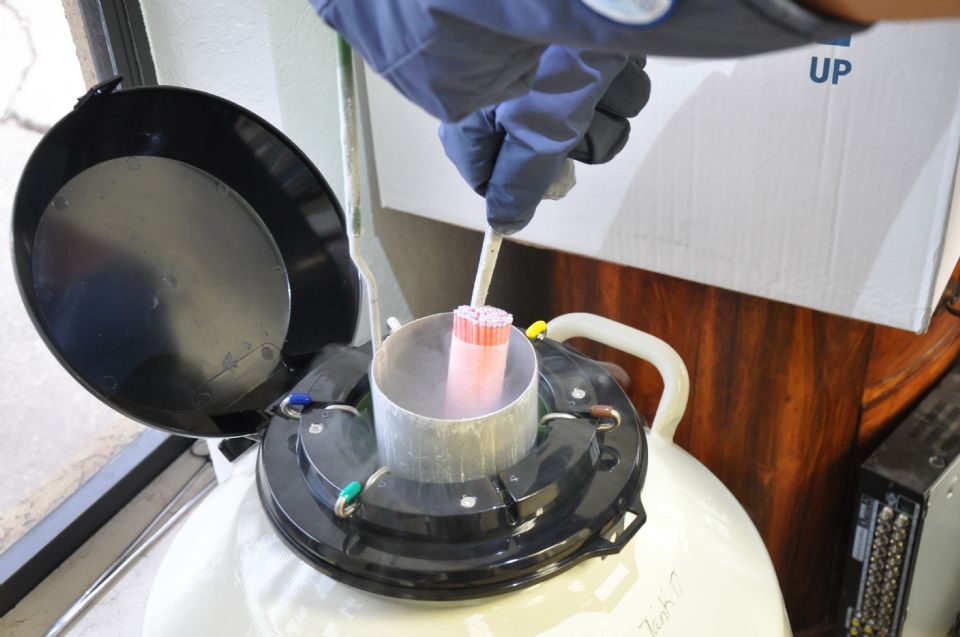
Palm Beach Equine Clinic will offer these new advanced techniques along with all of the traditional services whether at the equine hospital or in a private barn. With expert care and advanced practices, PBEC maximizes the likelihood of a successful pregnancy and to produce the talent of the future.
To learn more about the routine and advanced reproductive services offered this season contact PBEC at 561-793-1599, HEMI 859-255-8741 or visit www.EquineClinic.com or www.Hagyard.com. Follow Palm Beach Equine Clinic and Hagyard Equine Medical Institute on Facebook and Instagram to see more about the clinic, its vets, and those they serve.
Palm Beach Equine Clinic veterinarian Dr. Richard Wheeler breaks down joint injections in this recent Noelle Floyd Equestrian Masterclass.
Demystify Joint Injections with Dr. Wheeler
In this Equestrian Masterclass by Noelle Floyd, you will learn:
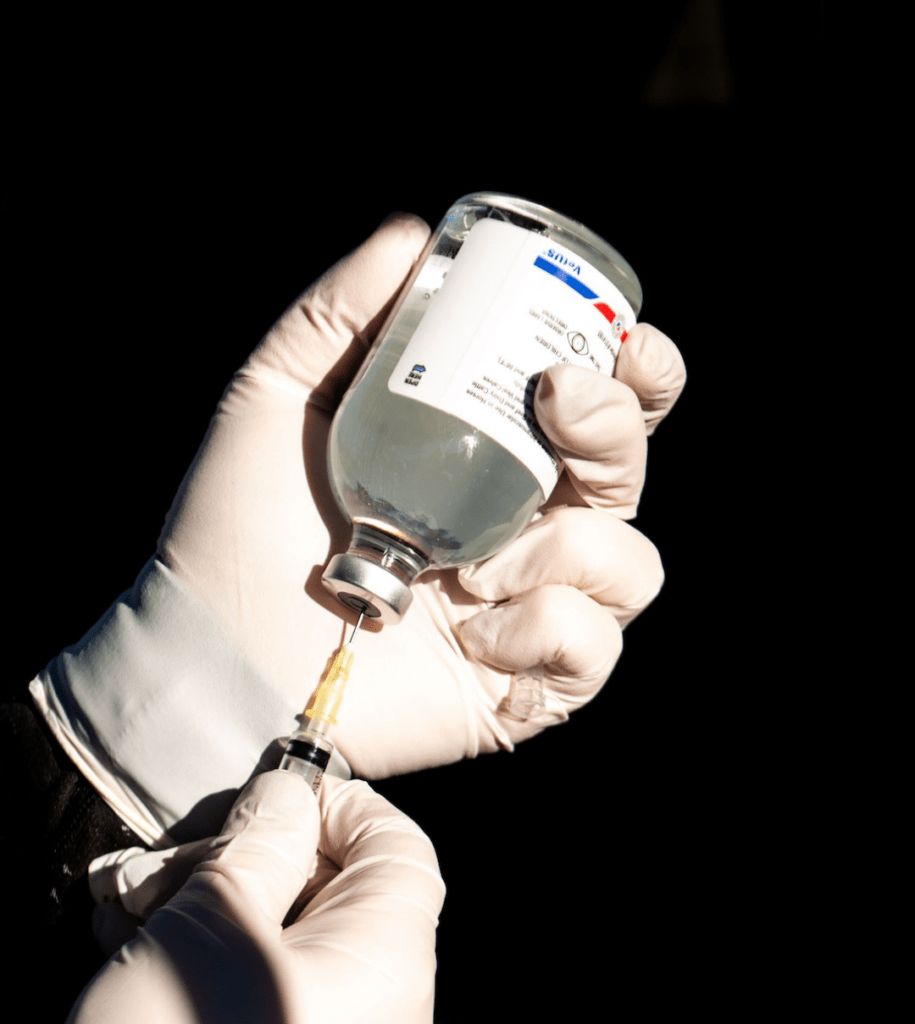
- What joint injections are, what they actually do, and how they’re used
- Why different types of injections are used, how they differ, the science behind each, and the pros and cons of each type
- How vets determine if injections could benefit your horse
- What a pre-injection examination process looks like
- How injections are performed on joints
- What the risks and potential side effects of injections are
- When it’s the right age to start joint maintenance
- What types of horses typically need joint maintenance
- How to choose the best joint maintenance strategy for your horse.
- Common myths and misconceptions about joint maintenance
Learn more and gain access to the full masterclass by clicking here!

In order for top-level performance horses to compete at their best, they must have full range of motion throughout their bodies as well as the ability to move freely. When a horse is out of alignment, a joint, whether it is in the spine or elsewhere in the body, is restricted in its normal range of motion. Veterinary medical manipulation, or what is known as a chiropractic adjustment in humans, is a form of alternative medicine that aims to solve this issue. The goal of any adjustment is to restore the optimal range of motion to that joint, which will subsequently alleviate inflammation in and pressure on surrounding nerves and soft tissue.
Dolton, a nine-year-old Hanoverian gelding owned by Karin Flint, is a well-known name in the para-dressage world. The gelding won two individual gold medals with Roxanne Trunnell at the 2020 Paralympic Games in Tokyo, Japan. Dolton was special from a young age and won his first bronze medal when he was only six years old at the 2018 FEI World Equestrian Games. The pair is trained by Andrea Woodard, who often rides Dolton herself and stays very involved in all aspects of his care. Woodard and Dr. Natalia Novoa of Palm Beach Equine Clinic, who have worked together to treat Woodard’s own horses, thought Dolton could benefit from medical manipulation.
“What I found with Dolton was very common with any dressage horse,” noted Dr. Novoa. “When working with Dolton I make sure that he is correctly aligned. I also address any pinched nerves, tight muscles, tight myofascial, and anything else that could create pain. I saw that the adjustments and the myofascial release were very beneficial for him.”
When a horse is out of alignment, it may result in their gait appearing different than usual, even at a walk. If one area of the body is not functioning properly, horses have to compensate, which can result in many common sport horse injuries. Medical manipulation aims to fix this issue by applying varying amounts of pressure to specific segments of the horse’s body, mainly focusing on the spine. This form of manual therapy, performed by a certified practitioner, often targets joint issues and muscular development. Additionally, medical manipulation can help in stimulating nerve reflexes and reducing pain.
“I like that I can tell Dr. Novoa what I’m feeling, and she tells me what she feels,” described Woodard. “We trust each other’s judgment, which helps in pinpointing where the issue is in the horse. Sometimes it’s something in Dolton’s body that’s not sitting how it’s supposed to. If something is out of position and Dolton is not moving how he is supposed to, other parts of his body can get sore.”
If done routinely, medical manipulation can benefit a horse’s natural balance, topline, and overall performance while also aiding in pain and soreness relief. Once Dr. Novoa began working with Dolton on a regular basis, it became easier for her to not only focus on the areas he needed help with the most, but also to fix them.

“The more I continued working with him the better he performed,” commented Dr. Novoa. “We were able to identify the misalignments and any patterns so that we could more easily correct them. He was progressively more comfortable with treatments as we continued with a regular program in place because he knew what to expect. He is a very sensitive horse. I know his areas of strength and weakness, so we developed a system that works for him, and we continue to have great results.”
Being certain that Dolton’s body is functioning properly is extremely important in para-dressage. Flint makes sure that both Woodard and Dr. Novoa are integral in his care so that Trunnell and Dolton can be confident stepping into the ring.


“With para-dressage you never know what you’re going to get that day with your body,” described Flint. “This means that it is really important to know what horse you’re getting. That’s why chiropractic work, all their care, and overall health is so important.
“The reason we like Dr. Novoa is that she’s very knowledgeable about the physics and mechanisms of the horse,” continued Flint. “Someone who isn’t familiar with this can do more damage, which is true with humans too. Someone who doesn’t listen to signals can end up putting the horse in more pain. She is very, very good at what she does.”
Sport horses are able to perform at their best when they are comfortable and have proper range of motion throughout their body. It is helpful to have horses examined by a certified veterinary medical manipulation practitioner to check that their body is moving properly and to decrease the chance of an injury due to compensation. Call Palm Beach Equine Clinic today at 561-793-1599 to set up an appointment.
Palm Beach Equine Clinic Provides Veterinary Students Opportunities to Further Education and Career

The path of veterinary medicine involves many years of devotion to education, both at the undergraduate and graduate level, prior to putting that knowledge into practice. Only a handful of those students choose to pursue equine medicine, and an even smaller subset then take on the challenge of becoming a board-certified specialist in their chosen field.
Since its inception 40 years ago, Palm Beach Equine Clinic (PBEC) has been committed to supporting the next generation of equine veterinarians and has provided numerous students, at various stages in their education, with learning opportunities and mentorship. Through externship, internship, and residency programs, PBEC has helped prepare students and veterinary graduates to lay the groundwork for successful future careers.
Equine Medicine in the Equestrian Capital
One of the key benefits of the programs is that PBEC is based in Wellington, Florida, an area that has rightfully earned its title of “Winter Equestrian Capital of the World.” The region is home to show jumping, dressage, polo, racing, and western performance horses; allowing ample opportunities for veterinarians to become well-rounded sports medicine practitioners.
“We are one of the foremost equine medical centers in North America and based in the epicenter of the equine industry,” said Dr. Scott Swerdlin, the president of PBEC who also spearheads the clinic’s Internship Committee. “The opportunities we are able to offer students looking to pursue a career in sports medicine are unmatched. In this regard, we are fortunate to attract top talent from some of the most prestigious universities around the world. Our interns get to be part of all the action and learn in an environment where every aspect of the horse’s health is examined with a fine-tooth comb.”

A Melting Pot of Expertise
PBEC’s team encompasses over 35 veterinarians who hail from across the U.S. and abroad to Canada, Colombia, Argentina, Australia, the U.K., and beyond. Their areas of expertise are wide-ranging, from lameness to acupuncture and breeding to dentistry, including board-certified specialists in surgery, diagnostic imaging, and internal medicine.
Dr. Sidney Chanutin grew up immersed in the horse world and spent time shadowing nearly every veterinarian at PBEC while she was in high school. After earning her doctorate in veterinary medicine from the University of Florida, she returned to officially join the PBEC team as an intern.

“What I most enjoyed about my internship was learning from a diverse group of veterinarians,” said Dr. Chanutin, “along with their different backgrounds, styles of working, and varied approaches to problem-solving. Everyone is willing to help and offer their unique perspective, so it’s a truly cohesive team.”
The first introduction to PBEC for many students is an externship. Qualified veterinary students in their final years of school can spend a few weeks with the PBEC team shadowing emergency cases in the hospital, on ambulatory calls, and at sports medicine appointments at the industry’s top competition venues. Externships also act as an introduction to the practice for many students seeking an internship upon graduation. This allows both the aspiring veterinarian and the PBEC team to become familiar with each other and see if it may potentially be a good match for a 12-month internship position.
Dr. Santiago Demierre is originally from Argentina and completed his degree in veterinary medicine from the Universidad de Buenos Aires in 2012. He validated his veterinary degree in the United States in 2017 through a certification program with the American Veterinary Medical Association. Dr. Demierre was an integral part of PBEC initially as an intern before becoming an official staff veterinarian.
“The high caseload and long-term partnerships working and learning alongside great veterinarians helped me not only in improving my professional skills and knowledge but also with other aspects such as communication with clients and colleagues,” Dr. Demierre reflected.

Unlike in human medicine, internships are optional for veterinarians. Once a veterinarian passes the necessary state board exams, they can start treating animals on day one out of school. Choosing to work under the supervision and mentorship of experienced veterinarians allows interns to apply their years of learning in the classroom into clinical practice. At PBEC, interns can learn with the aid of advanced technologies in diagnostic imaging, innovative regenerative therapies, reproduction and fertility software, and specialized surgical suites.
“While we can teach and provide them with a wealth of knowledge and hands-on experience,” Dr. Swerdlin explained, “our interns in return are extremely valuable to us because they bring a fresh mindset and new ideas to the team,” explained Dr. Swerdlin. “The ability to work well with others, a good sense of humor, great work ethic, and most importantly, excellent communication skills are the qualities I look for in an intern.”
Never Stop Learning
Continuing education is a major component of a life in medicine. In addition to journal clubs, educational seminars, and opportunities to travel to professional conferences, students are always exposed to learning opportunities by working collaboratively with colleagues as well as visiting and referring veterinarians.
After completing their internship, most will pursue an associate veterinarian position, whether at PBEC, another private practice, a university, or work independently. Some will go a step further and advance their education through a residency program. Residencies are rigorous two to four year commitments—length dependent on the specialty—designed to give veterinarians the skillset, knowledge base, and experience required to become eligible for certification by veterinary medical specialty boards. Board-certified specialists are considered experts in their field and often treat complicated, difficult cases.
With board-certified specialists on staff, PBEC has provided residencies to select veterinarians over the years, including Dr. Michael Myhre. A graduate of Cornell University College of Veterinary Medicine, Dr. Myhre fulfilled his surgical residency under the direction of PBEC’s board-certified surgeons Dr. Robert Brusie, Dr. Weston Davis, and Dr. Jorge Gomez. He assisted on over 568 surgeries over his three years at PBEC.
“Completing my residency at PBEC has allowed me to pursue my dream of becoming an equine surgeon and working at a large referral center in the northeast. I learned a great deal about all aspects of general surgery, but especially orthopedic surgery. We did many fracture repairs at PBEC, and I would love to continue focusing on these in the future. Without my time at PBEC, I wouldn’t be able to practice as I am now,” Dr. Myhre said.

Externs, interns, and residents are integral members of the equine hospital. It is part of PBEC’s mission to support the community, which includes the next generation of equine veterinarians.
Dr. Swerdlin said, “Teaching and mentoring young veterinarians and watching them grow into confident and competent practitioners gives me the greatest satisfaction.” To learn more about externships, internships, and other opportunities with Palm Beach Equine Clinic, please visit equineclinic.com/internships-externships or call 561-793-1599.
Dr. Jorge Gomez and Dr. Christopher Elliott were amongst the over 100 veterinarians on the ground supporting the equine athletes at the 2020 Tokyo Olympic Games. Jorge Gomez, MVZ, MS, DACVS, served as the Official Veterinarian for the Mexican Show Jumping Team and is a surgeon with Palm Beach Equine Clinic, and Chris Elliott, BVSC, MRCVS, MANZCVS, DACVSMR, served as Veterinary Services Supervisor and is an associate veterinarian for Palm Beach Equine Clinic. We spoke with each of them about their experiences at this unprecedented international event.
What were your expectations for Tokyo, and did the Games live up to those expectations?
CE: Tokyo 2020 reached far beyond my expectations. The ability to achieve such an elite level of equestrian competition in the face of COVID-19 restrictions is remarkable. The whole Olympic organizing committee should be proud of this achievement.
JG: We all knew of the existing restrictions in place for COVID-19. There were mobility limitations in place to decrease the chances of spreading the virus, however, the Games were very well organized. The competition and training arenas were state-of-the-art facilities, and the stables were all under air conditioning, so those amenities couldn’t have been better.
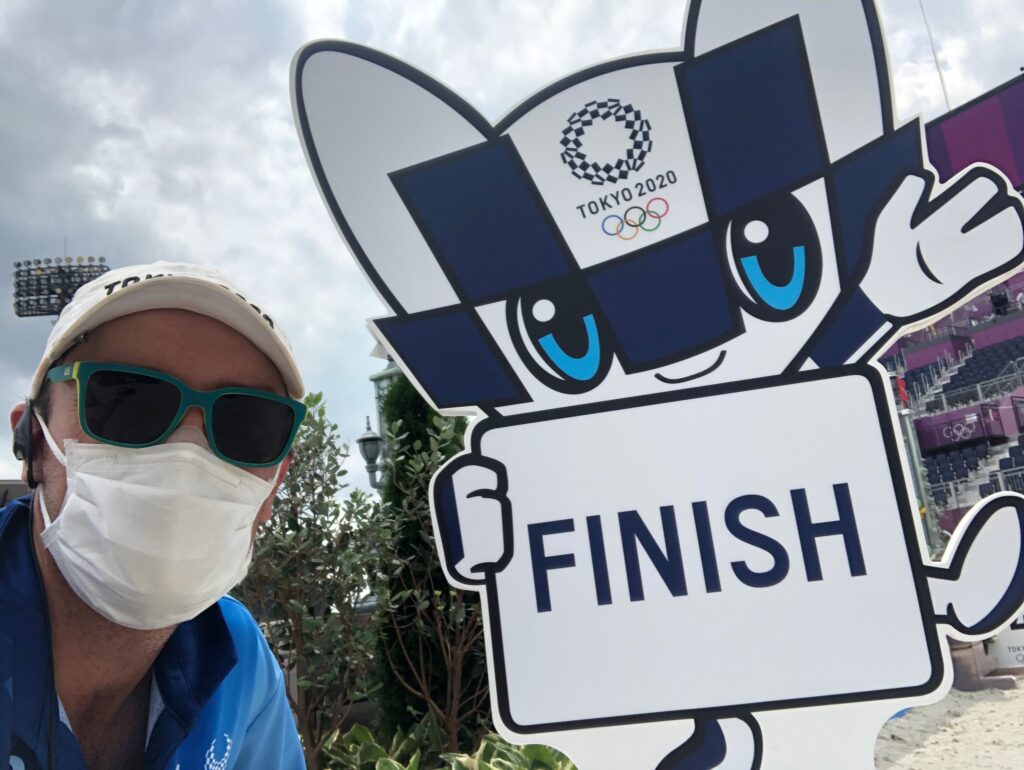

Dr. Chris Elliott concludes the 2020 Olympic Games with Miraitowa (the Olympic mascot).
What did you enjoy most about your time at the Olympics?
CE: Having a front row seat to the Olympic Games has been an honor and a privilege. I have most enjoyed working alongside my veterinary colleagues from across the globe. The Games spirit was strong among all the vets at Tokyo 2020.
JG: Most definitely the level of competition. We had the opportunity to watch the best athletes in all three disciplines dressage, eventing and show jumping.
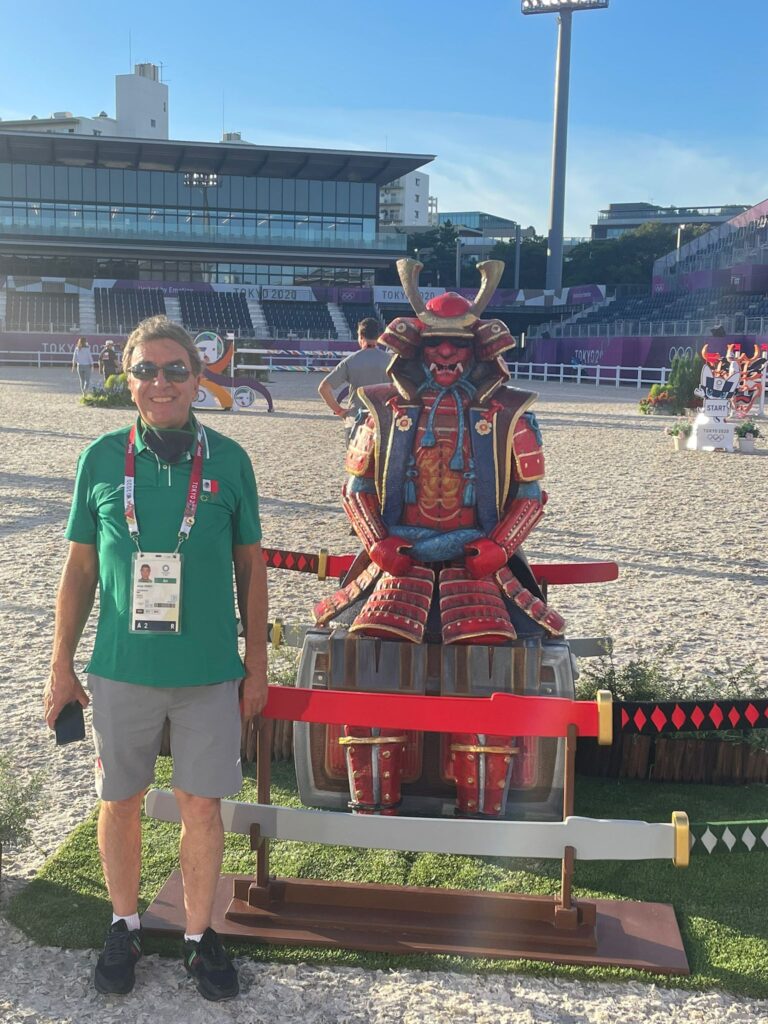
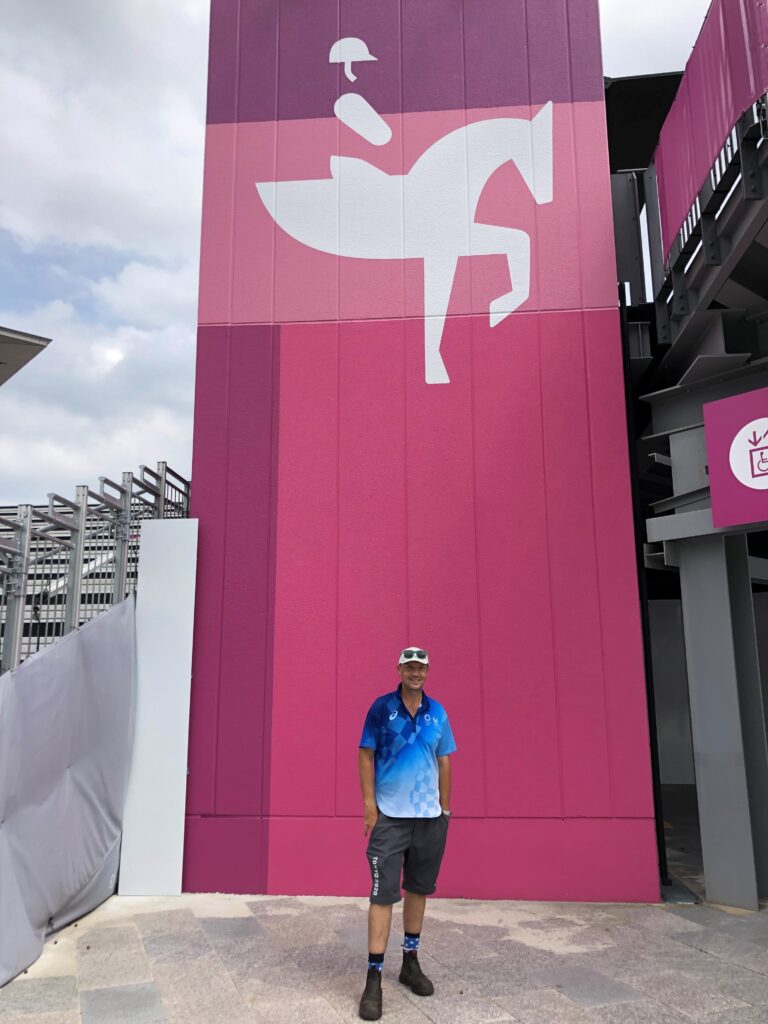
What was the experience like of working with such a diverse group of veterinarians?
CE: It’s always great working alongside veterinarians from all over the world. Veterinary medicine transcends language and cultural barriers and bonds us all in the goal of preserving equine health and welfare. In the face of many extreme challenges surrounding these Olympic Games, the professionalism, dedication, and efficiency of all vets at the event rose to the fore to ensure the very best in equine health, welfare, and performance.
JG: The experience is always nice and an honor to be a part of. There’s a group of us that have been at many of the international competitions and Olympic Games for years. Then, there are also new faces, and this is a wonderful opportunity for us all to meet. We share difficult cases from our practices as well as talk about new techniques and treatments.


Palm Beach Equine Clinic extends congratulations to all of the athletes that represented their respective countries at the 2020 Tokyo Olympic and Paralympic Games. While challenges were abundant, the events were awe-inspiring and the best of equestrian sport was on display.
PBEC also extends a special congratulations to our friends Dr. Mike Heitmann and Alice Womble, the owners of Sanceo, ridden by Sabine Schut-Kery. Sanceo was a part of the U.S. dressage team that won silver and had two personal best scores at the Tokyo Olympic Games.
Understanding Anhidrosis in Horses
Check out the August 2021 issue of POLO Players Edition and flip to the Equine Athlete section to read about anhidrosis. Palm Beach Equine Clinic veterinarians describe what a diagnosis of non-sweating entails for the sport horse, signs/symptoms, and best management practices to keep anhidrotic horses comfortable. Read about anhidrosis in horses by clicking here or on the image below.
For future educational resources on horse health, subscribe to the United States Polo Association official magazine POLO Players Edition, and follow Palm Beach Equine Clinic on Facebook, Instagram @pbequineclinic, and Twitter @palmbeachequine.
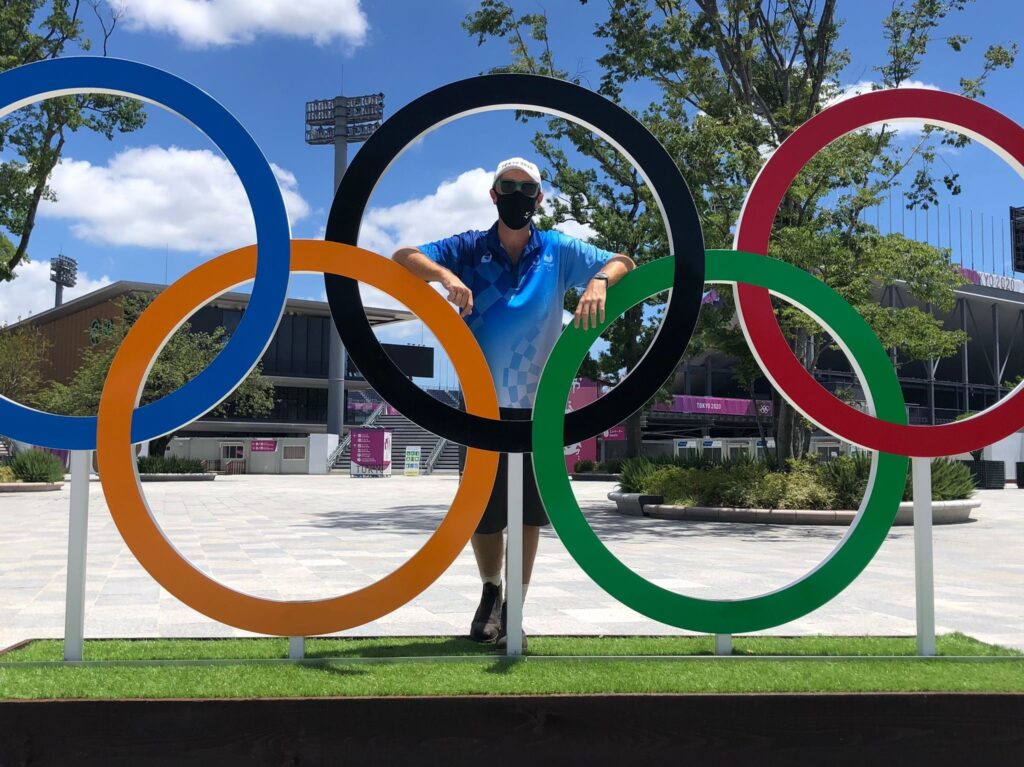
Dr. Christopher Elliott, BVSC, MRCVS, MANZCVS, DACVSMR, is an associate sports medicine veterinarian with Palm Beach Equine Clinic who has served as an FEI Official Veterinarian for elite international events across disciplines. Most notably, he has worked for the 2008 Paralympic Games in Beijing, 2014 World Equestrian Games in Normandy, 2016 Olympic and Paralympic Games in Rio, 2018 World Equestrian Games in Tryon, North Carolina, as well as numerous 3-day events including Sydney, Melbourne, and Adelaide in Australia, and Badminton and Burghley in the United Kingdom. Dr. Elliott has been in Tokyo since early May making preparations for the Olympics as the Veterinary Services Supervisor, and he has given us an inside look into the heat and humidity safety measures for equine athletes.
Tokyo temperatures in July and August can reach as high as 105º Fahrenheit (41º Celsius), so cooling measures are crucial to preventing overheating for all athletes, both equine and human.
Safety measures include:
- Cooling tents have been made easily accessible throughout Equestrian Park. The cooling tents are well stocked with water troughs, which are monitored by a team of volunteers who use ice blocks to keep the water at 59º Fahrenheit (15º Celsius).
- Misting fans in cooling tents are on for the duration of training and competition times.
- Training is halted from 11:00 a.m. until 3:00 p.m. which are the hottest times of the day.

Tokyo Olympics Veterinary Services Supervisor Dr. Christopher Elliott. 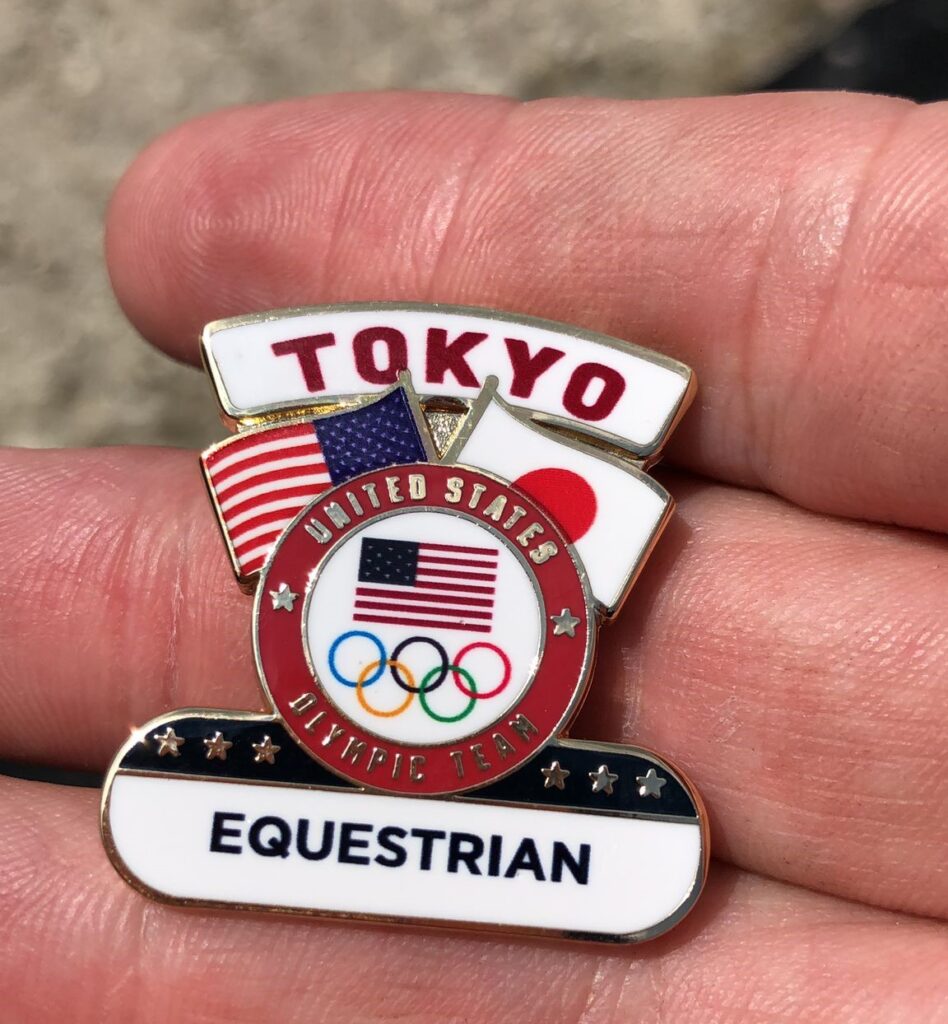

Cooling areas at the end of each barn aisle in the Equestrian Village in Tokyo. 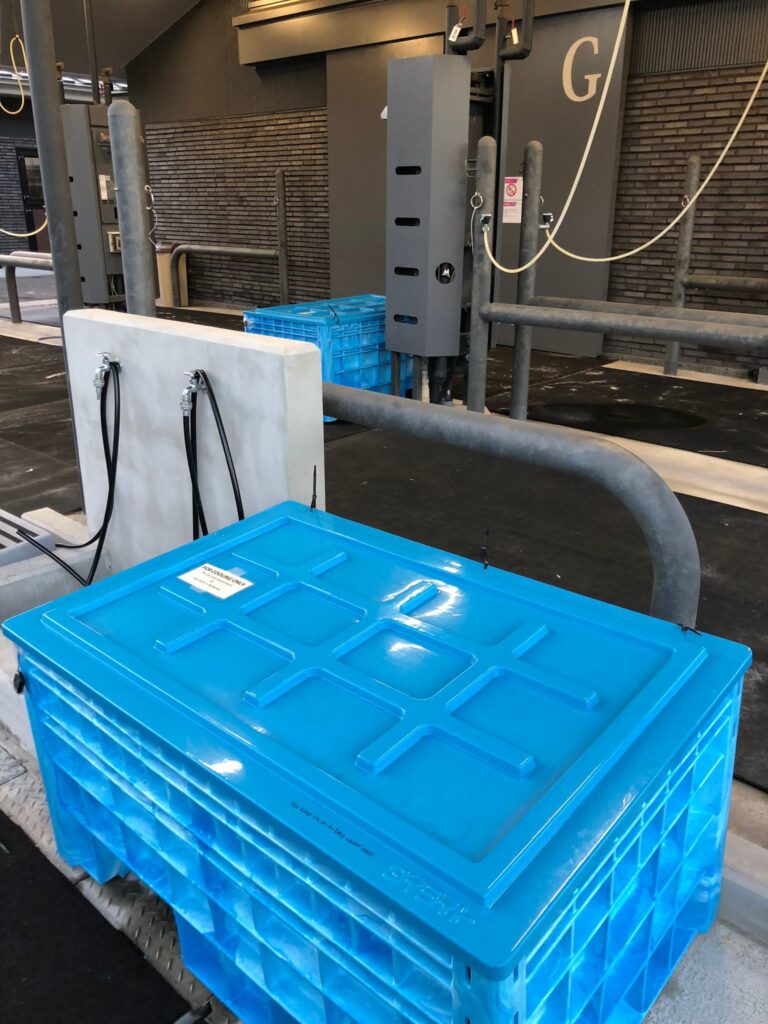
Water troughs have been made available at the ends of each barn aisle and are kept at 59 degrees Fahrenheit. 
Horses touch down in Japan!
This is not the first time extreme heat has caused concern for equestrian athletes at the Olympic Games, and significant research has been conducted to increase athlete safety when temperatures are high. Dr. Elliott published clinical insights regarding research studies between the 1992 Barcelona Olympic Games and the 1996 Atlanta Olympic Games.
Dr. Jorge Gomez to Serve as Official Veterinarian for Mexico Show Jumping Team

Dr. Jorge Gomez, MVZ, MS, DACVS, is the Official Veterinarian for the Mexico Show Jumping Team at the 2020 Olympic Games in Tokyo. Dr. Gomez, originally from Colombia, joined PBEC in 2011 and has since served as an Official Veterinarian at the 2012 Olympic Games in London, the 2014 Alltech FEI World Equestrian Games in Normandy, the 2015 Pan American Games in Toronto, and the 2016 Olympic Games in Rio.
“It is an honor to have been chosen for this responsibility,” said Dr. Gomez. “I have had the fortune of serving in two previous occasions and am grateful for the opportunity to return as a veterinarian for the Olympics.”
There is a tremendous amount of work and attention to detail required in preparing and maintaining an Olympic-caliber equine athlete. Over the past six months, Dr. Gomez has been working closely with the Mexico Show Jumping Team horses and riders. The Team just concluded a European tour, competing in three highly renowned Nations Cup competitions in Rome, Italy, St. Gallen, Switzerland, and La Baule, France. During these events, Dr. Gomez pays very close attention to the horses by examining them each morning, evening, and observing them during training. The horses’ veterinary care and overall health will remain Dr. Gomez’s utmost priority well after the Olympic cauldron is lit as competition begins at the Equestrian Park.

“The Olympic Games bring together the best athletes in the sport. In our case, the best horses and the best riders. It is a wonderful opportunity to be able to watch and learn from the top combinations in the world. For myself, it is also a unique opportunity to share time with fellow team veterinarians from around the world,” said Dr. Gomez.
For updates from Dr. Gomez at Olympic Village, follow Palm Beach Equine Clinic on Instagram @pbequineclinic, Facebook, or Twitter @PalmBeachEquine.
On March 24, 2021, board-certified internal medicine specialist Dr. Peter Heidmann answered questions regarding Equine Herpesvirus (EHV) live on the Noelle Floyd Instagram page. Watch the video below or read these six main takeaways he discussed.
1. Equine Herpesvirus (EHV) can be present in any area where there are horses.
EHV can be found in horses in every country around the world. The virus can have varying consequences and not every horse may be symptomatic. The duration of their immunity, their capability to shed viral particles, and whether they continue to carry the virus are all variables unique to the individual horse.
2. There are multiple strains of EHV that lead to varying health defects.
Most horses, by two years old, have been exposed to EHV. Nearly every horse over five years old has had EHV in a mild respiratory form, in which they have likely suffered from symptoms such as a runny nose or cough. The disease becomes gravely serious when there is a neurological form of EHV-1 that is spreading rapidly among horses.
Over the last century, the primary focus of EHV disease control was related to reproduction. EHV was a major cause of infectious abortions in mares. Since the advent of effective vaccines that protect against EHV abortions, the concern has shifted to the rare but serious occurrences of neurologic disease caused by EHV-1.
Certain strains of EHV can have more propensity to cause neurological disease, while others do not. It is important to understand that both “neurologic” and “non-neurologic” strains can cause neuro symptoms, and that some horses infected with “non-neurologic” strains may also develop the neurologic form of the disease. Symptoms of mild neurologic disease can include ataxia or hind end weakness and irregular gaits. When horses suffer mild neurologic symptoms, most will make a full recovery. If they suffer from severe symptoms, it can be increasingly difficult to treat, and some cases can be fatal.
3. Vaccination is key.
There are currently no genetic explanations regarding whether a particular horse may be more likely to contract EHV-1. However, when a horse is stressed, whether it be from shipping, competing, or other causes, its immune system is more susceptible to illness. EHV-1 can live in the central nervous system, and during times of stress when endogenous corticoids are produced, the virus can start to replicate. This causes the horse to shed viral particles into the environment and explains why there are outbreaks of the disease. It does not take much for a stressed horse to start shedding viral particles into the environment and infecting non-stressed horses nearby.
Vaccinations can help horses generate additional antibodies and minimize the spread of disease. The vaccines available today are effective at preventing the respiratory and reproductive strains of EHV, but are not effective for the neurologic strain. It is just as important as ever to vaccinate because vaccines help to limit the spread of virus by decreasing the shedding of viral particles from each individual horse.
Immunization is recommended every six months at a minimum. Most vaccine manufacturers suggest vaccinating against EHV as often as once every 90 days when travelling or competing. It is recommended to work closely with your veterinarian to tailor a vaccination program for your horses’ specific requirements.

4. Surveillance is crucial to preventing a serious outbreak in the United States.
Due to the recent outbreak in Europe, medical surveillance has increased. There are now extra layers of protection in the process of importing horses. Imported horses have always been quarantined, but now horses are also receiving a nasal swab to look for the presence of EHV-1 in their nasal passages. There have been cases of EHV-1 in the U.S. recently. However, there is no evidence that these EHV-1 cases are related to the major outbreak in Europe, partially thanks to our increased level of surveillance on horses being brought into the country.
5. The handling of horses with fevers shifts dramatically when cases have been identified locally.
Veterinarians have significantly shifted how show horses with any symptoms are being handled. If a horse had presented with a fever or runny nose prior to the European EHV-1 outbreak in early 2021, it would typically have been treated by its own veterinarian and left to return to full health. What is happening now is that each horse with a fever becomes a possible candidate for being the index case of EHV-1. This changes veterinarians’ responsibilities everywhere because of the potential for the disease to spread among the population in respective local areas. Horses with fevers must therefore be strictly quarantined and tested.
The fastest and most accurate test in the world for diagnosing EHV-1 is a PCR test, which looks for the DNA of the infecting organism. The horse will test positive if it is actively shedding organisms. The biggest downside is that it typically takes 24 hours to produce results. Therefore, horses who have been tested are put under strict isolation until the test results come back. Often, by the time test results are ready, the horse’s symptoms have ceased. Yet that is the level of scrutiny necessary to prevent a serious outbreak.
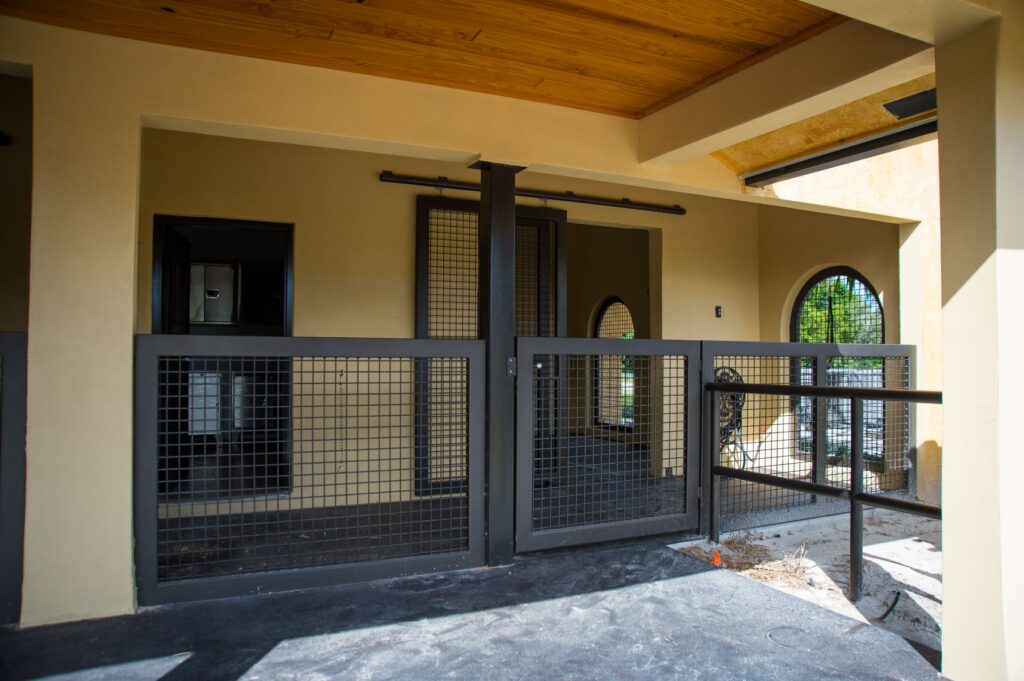
6. There are clusters of the disease reported all over the Unites States, although they are unrelated to the neurological strain of EHV-1 outbreak in Europe.
While this is routine from a veterinarian’s perspective, it is still serious and certainly worth our attention. A few isolated cases reported in the U.S. this March have been found to be due to the neurotropic form of the disease and some have been non-neurotropic. The concern is warranted, but cases are highly localized, mainly in areas with large equine populations. We see the disease cropping up because the virus may already be dormant in their bodies. To minimize the likelihood of outbreaks on the individual farm level, have a vaccination program with your veterinarian and if necessary take temperatures of horses twice daily to catch any viral infection early.
For up-to-date information on reported cases of EHV, horse owners can utilize the following resources:
- Disease outbreak alerts via the Equine Disease Communication Center
- FEI website for notices and updates on international competition protocols
- Your state’s Department of Agriculture website for reportable diseases in your area
